Papers by Pelin Kut Belenli

Pelin Kut Belenli, 2023
Bu çalışmanın amacı, özgün bir Cumhuriyet dönemi şairi, yazarı ve çevirmeni olan Cahit Sıtkı Tara... more Bu çalışmanın amacı, özgün bir Cumhuriyet dönemi şairi, yazarı ve çevirmeni olan Cahit Sıtkı Tarancı’nın Türk edebiyatındaki yeri ve önemine vurgu yapmak ve özellikle şiirlerine odaklanarak sanatçının Türk edebiyatına, kültürüne ve hafızasına yaptığı katkıları tespitlerle öne sürmektir. Tarancı’nın şiirden hikâyeye, mektuptan makaleye, yayımlanan konuşma, mülâkat, biyografi ve çevirilere uzanan geniş bir yelpazede, farklı türlerde eserler üreten bir sanatçı ve sanatın, sanatçının ve sanat eserinin çeşitli meselelerine dair görüşler belirten bir edebiyat eleştirmeni olarak Türk edebiyatını ve kültürünü zenginleştiren bir figür olduğu bu çalışmada vurgulanmaktadır. Çalışmanın edebi inceleme bölümünde Tarancı’nın Düşten Güzel adlı şiir kitabında yer alan “Atatürk,” “Mehmetçik,” “On Kasım,” “İstiklâl Marşı’nı Dinlerken,” “Meçhul Asker” ve “Memleket” şiirleri ve ayrıca “Atatürk’ü Düşünürken” ve “Memleket İsterim” şiirleri şairin vatan, memleket ve insan sevgisi temalarını, kardeşlik, birlik ve beraberlik duygularını ön plana çıkaran şiirlerine örnekler olarak ele
alınmaktadır.
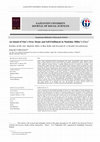
Pelin Kut Belenli, 2024
Circe is renowned for her profound knowledge of sorcery as a minor goddess in Greek mythology. He... more Circe is renowned for her profound knowledge of sorcery as a minor goddess in Greek mythology. Her depictions and representations are numerous in literature, painting, music, and popular culture, ranging from Homer’s classical masterpiece The Odyssey to John William Waterhouse’s painting Circe Invidiosa (1892). Recently, Circe has been recreated with a modern kick by the contemporary American novelist Madeline Miller. In Miller’s novel Circe (2018), Circe voices her own story as the first-person heroine. The novel focuses on the spiritual growth and self-fulfilment of the protagonist. Reimagined by Miller in her family home in the early chapters, Circe is the innocent yet neglected child, always strange, pushed away, looked down upon, and alienated by her parents, siblings, and relatives. Miller first portrays Circe in her father’s halls where she is made to believe that she is a failure, she is incomplete, lacking, and neither a nymph nor a goddess. However, as her powers as a witch begin to unravel, some of her practices draw the attention of the patriarchs in her life, and she is exiled by these men to an island named “Aiaia.” How a woman can turn a punishment given by men into an advantage is shown in the novel. Marginalised and exiled to a deserted island with a house, forests, herbs, plants, and animals, Miller’s Circe practices her witchcraft, discovers life, and manifests her true self. In this respect, this article focuses on how Circe’s island, which she turns into her “home,” empowers Circe as a woman.

MORAL INSANITY IN ROBERT BROWNING’S “SOLILOQUY OF THE SPANISH CLOISTER”, 2022
Robert Browning's dramatic work "Soliloquy of the Spanish Cloister" (1842/1971) is an example of ... more Robert Browning's dramatic work "Soliloquy of the Spanish Cloister" (1842/1971) is an example of the psychological school of poetry in the context of Victorian poetry since the persona is portrayed as someone who feels an irrational and intense hatred towards a peer of his. The emotional state of the persona can be explained with moral insanity, a type of insanity defined by a Victorian psychologist, James Cowles Prichard. In this article, Prichard's definition of and explanations for moral insanity as a type of insanity are used as reference points in the literary analysis of Browning's "Soliloquy of the Spanish Cloister." The poet's use of the dramatic monologue, a major form in the poetry of psychology, is also scrutinised in this article regarding the advantages it offers for the effective psychological portraiture of the fictional character. As the literary analysis in this article shows, since the soliloquist is depicted as an individual with an emotional weakness, defect, or disorder, namely excessive hatred or rage, he resembles the patients of moral insanity. Furthermore, this study shows that there are no defects in the intellectual capacity of the speaker, which makes his case closer to the cases of moral insanity.
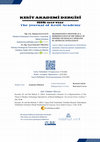
Kayaaltı, M. and Kut Belenli, P. (2021). Frankenstein’s Monster As A Representative of The Threat of Modern Technology Operated by Artificial Intelligence. The Journal of Kesit Academy, 7 (26), 38-48., 2021
Mary Shelley’s well-known novel Frankenstein; or, The Modern Prometheus (1818) has been one of th... more Mary Shelley’s well-known novel Frankenstein; or, The Modern Prometheus (1818) has been one of the greatest works of English literature. The novel contains such a great number and variety of elements that - since its publication, while being studied by many authors - it has been studied from various perspectives from feminism to Marxism, from materialism to psychology. Accordingly, based on a transhumanist view, this paper has been prepared to query the ethics and limits of science by combining and equalling Victor Frankenstein’s Monster and the technology operated with Artificial Intelligence (AI). The paper interrogates to what extent the gadgets both technological and non-technological produced for the good of humanity are useful, and whether they pose a threat to the lifecycle of the universe.
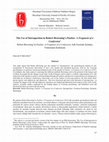
Refereed Article: Kut Belenli, P . (2021). The Use of Introspection in Robert Browning’s Pauline: A Fragment of a Confession . Hacettepe Üniversitesi Edebiyat Fakültesi Dergisi , 38 (1) , 207-221 . DOI: 10.32600/huefd.798983, 2021
This study argues that Robert Browning uses the method of "introspection," the psychological meth... more This study argues that Robert Browning uses the method of "introspection," the psychological method of selfexamination or first-person observation of one's own mental and emotional processes, used by the Victorian psychologists, to represent various psychological states of the speaker in Pauline: A Fragment of a Confession (1833). Accordingly, this study analyses it pursuing the different methods Browning used in the portrayal of the human soul to obtain an insight into the changes in the inner world of humans and to achieve a realistic representation of it. The endeavour of the speaker to achieve self-knowledge through self-analysis and how he is represented as an introspective individual are scrutinised. Furthermore, Browning's use of the matters of self-consciousness, the first and/or thirdperson speech, and subjectivity and objectivity-that were discussed and used in the discourse of introspection-to examine the images of the self and subjective experience are studied and illustrated in the analysis of the work. In this analysis, scientific studies conducted by the leading figures in Victorian psychology, and definitions used and discussed by them are used in the discussion.
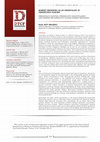
DTCF Dergisi / Journal, 2017
Orientalism, according to Edward Said, is a Western fantasy which is not based on observation but... more Orientalism, according to Edward Said, is a Western fantasy which is not based on observation but on dreams, fantasies and assumptions of the West; and this makes it a fabricated construct. As Said argues in the introduction of Orientalism (1978), "[t]he Orient [is] almost a European invention, and ha[s] been since antiquity a place of romance, exotic beings, haunting memories and landscapes, remarkable experiences"(1). "Victorian Orientalism" marks the contemporary taste of the English. Publications of Richard F. Burton's successful translation of the Arabian Nights in 1884 and Edward Fitzgerald's translation of Omar Khayyam's Rubáiyát can be seen as two examples of Victorian Orientalism. Because of this interest in the Orient, literature has become one of the major areas in which Orientalism is directly represented. Thus, Robert Browning's Ferishtah's Fancies (1884) can be considered as another example of Victorian Orientalist literature since he probably wrote it under the inuence of these Orientalist works.
Browning's book of poetry was published in 1884, and it sold very well due to this fashion of Orientalism. Although considered to be a minor work of Browning, this work is signicant in illustrating the interest in the East. This book consists of didactic tales which are told by a Persian "dervish-to-be." Ferishtah of the title is an imaginary sage interpreting the world by "reading the signs of the physical universe, nding the moral meaning of events, and then making stories that teach spiritual truth" (Mermin). This stereotypical "dervish" figure shows how Browning constructed this fictional Orientalist world.

“Are the Speakers Mad or Bad?: Browning’s ‘The Laboratory’ and Duffy’s ‘Havisham.’” Concerning Evil. Eds. Grace Holden and Gabriela Màdlo. Oxford: Interdisciplinary Press, 2013. 99-108. Web. (E-book), 2013
Two British poets from different centuries, Robert Browning and Carol Ann Duffy
represented in t... more Two British poets from different centuries, Robert Browning and Carol Ann Duffy
represented in their poems two extraordinary female figures suffering from
frustrated love which gave them ‘homicidal’ desire. Robert Browning’s ‘The
Laboratory’ was first published in 1844, and set in seventeenth-century France. He
was inspired by the life story of a French Marquise who murdered her father,
brothers, and planned to kill her husband. Robert Browning portrays a woman who
orders poison from a pharmacist to kill the person who ‘ensnared’ her lover. Her
passion to poison the woman, and the excessive pleasure she takes from watching
the preparation of the poison is aberrant. On the other hand, Carol Ann Duffy’s
‘Havisham’ was written in 1998, reanimating Charles Dickens’ well-known
character Miss Havisham from Great Expectations who was left at the altar and
consequently went mad. The violent and aggressive tone of Havisham and her
psychopathic fantasies about a honeymoon with a male corpse are perverted; but
still, whether she is truly depraved is questionable. This chapter’s aim is to
question and evaluate each speaker’s moral and mental condition by raising several
questions: Is she acting rationally or impulsively? Is it jealousy and/or revenge? If
so, does that justify her behaviour? Is it her nature or is it madness? The excessive
thoughts and behaviours of the characters are surely ‘wrong’ and ‘evil’ according
to the current codes of ethics and morals of the time. Still, questions regarding
whether the speaker has any reason behind her behaviour and/or whether she is
mad or purely evil dominate both poems. Therefore, the further aim of the chapter
will be to find answers to the raised questions.

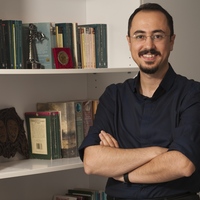









Uploads
Papers by Pelin Kut Belenli
alınmaktadır.
Browning's book of poetry was published in 1884, and it sold very well due to this fashion of Orientalism. Although considered to be a minor work of Browning, this work is signicant in illustrating the interest in the East. This book consists of didactic tales which are told by a Persian "dervish-to-be." Ferishtah of the title is an imaginary sage interpreting the world by "reading the signs of the physical universe, nding the moral meaning of events, and then making stories that teach spiritual truth" (Mermin). This stereotypical "dervish" figure shows how Browning constructed this fictional Orientalist world.
represented in their poems two extraordinary female figures suffering from
frustrated love which gave them ‘homicidal’ desire. Robert Browning’s ‘The
Laboratory’ was first published in 1844, and set in seventeenth-century France. He
was inspired by the life story of a French Marquise who murdered her father,
brothers, and planned to kill her husband. Robert Browning portrays a woman who
orders poison from a pharmacist to kill the person who ‘ensnared’ her lover. Her
passion to poison the woman, and the excessive pleasure she takes from watching
the preparation of the poison is aberrant. On the other hand, Carol Ann Duffy’s
‘Havisham’ was written in 1998, reanimating Charles Dickens’ well-known
character Miss Havisham from Great Expectations who was left at the altar and
consequently went mad. The violent and aggressive tone of Havisham and her
psychopathic fantasies about a honeymoon with a male corpse are perverted; but
still, whether she is truly depraved is questionable. This chapter’s aim is to
question and evaluate each speaker’s moral and mental condition by raising several
questions: Is she acting rationally or impulsively? Is it jealousy and/or revenge? If
so, does that justify her behaviour? Is it her nature or is it madness? The excessive
thoughts and behaviours of the characters are surely ‘wrong’ and ‘evil’ according
to the current codes of ethics and morals of the time. Still, questions regarding
whether the speaker has any reason behind her behaviour and/or whether she is
mad or purely evil dominate both poems. Therefore, the further aim of the chapter
will be to find answers to the raised questions.
alınmaktadır.
Browning's book of poetry was published in 1884, and it sold very well due to this fashion of Orientalism. Although considered to be a minor work of Browning, this work is signicant in illustrating the interest in the East. This book consists of didactic tales which are told by a Persian "dervish-to-be." Ferishtah of the title is an imaginary sage interpreting the world by "reading the signs of the physical universe, nding the moral meaning of events, and then making stories that teach spiritual truth" (Mermin). This stereotypical "dervish" figure shows how Browning constructed this fictional Orientalist world.
represented in their poems two extraordinary female figures suffering from
frustrated love which gave them ‘homicidal’ desire. Robert Browning’s ‘The
Laboratory’ was first published in 1844, and set in seventeenth-century France. He
was inspired by the life story of a French Marquise who murdered her father,
brothers, and planned to kill her husband. Robert Browning portrays a woman who
orders poison from a pharmacist to kill the person who ‘ensnared’ her lover. Her
passion to poison the woman, and the excessive pleasure she takes from watching
the preparation of the poison is aberrant. On the other hand, Carol Ann Duffy’s
‘Havisham’ was written in 1998, reanimating Charles Dickens’ well-known
character Miss Havisham from Great Expectations who was left at the altar and
consequently went mad. The violent and aggressive tone of Havisham and her
psychopathic fantasies about a honeymoon with a male corpse are perverted; but
still, whether she is truly depraved is questionable. This chapter’s aim is to
question and evaluate each speaker’s moral and mental condition by raising several
questions: Is she acting rationally or impulsively? Is it jealousy and/or revenge? If
so, does that justify her behaviour? Is it her nature or is it madness? The excessive
thoughts and behaviours of the characters are surely ‘wrong’ and ‘evil’ according
to the current codes of ethics and morals of the time. Still, questions regarding
whether the speaker has any reason behind her behaviour and/or whether she is
mad or purely evil dominate both poems. Therefore, the further aim of the chapter
will be to find answers to the raised questions.